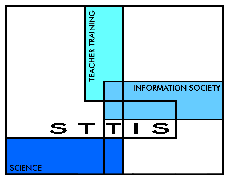Guide
 Contents Contents
|
Notes
on Sections C, D, E and F Transformations of curriculum innovations
The main aims of these sections are:
-
To compare different ways in which teachers may transform the ‘Energy transfer’
and ‘Energy and Change’ innovations.
-
To explore factors that may influence the transformations.
-
To consider these issues in the light of their own teaching experience.
Notes on the activities follow:
Section C Transformations: content (C1
Energy transfer)
These stories bring out key ideas in the research findings. Though the
National Curriculum may have produced changes, these are not necessarily
directed towards understanding energy in a different way; this may be because
of a simple substitution of terms (Story A) or avoidance of old ways of
talking but not of thinking (Story B). Some teachers have rejected the
new approach completely, for reasons they have thought about and can make
explicit. Some see uses in both approaches depending on context (Story
D) while others find both approaches problematic.
These stories bring out key ideas in the research findings. Few teachers
would agree that the ideas of this project are not new (Story A), and a
few have expressed concern about the apparent lack of rigour in the approach
using pictures (Story B) though in fact the picture language is firmly
rooted in sound thermodynamic principles. Many teachers have shown interest
in the approach; those who have used the materials themselves have used
them in a variety of ways, transforming the intentions of the curriculum
developers. These approaches include creating a new topic (Story C), transforming
the meaning (Story D) and integrating on the small scale but not using
the ideas in other aspects of teaching (Story E).
Section D Transformations: beliefs about learning (D1
Energy transfer)
Teachers’ views about learning include that the transfer concept is too
abstract (Story A), that the issue is about the ease of use of verbal terms
(Story B), and that different approaches are appropriate to pupils of different
ages (Story C).
Section D Transformations: beliefs about learning (D2
Energy and change)
Teachers who have not used the materials often have concerns that pupils
will find the picture language too difficult (Story A); it is important
though to remember energy is anyway a difficult concept and it will not
‘emerge’ directly from first-hand experience. Teachers who have used the
materials have been surprised that their predictions about difficulty were
exaggerated (Story B) and that the picture language actually made the ideas
more accessible (Story C). Some of the activities do not have ‘clear-cut’
answers, and can generate as much discussion amongst science graduates
as Y7 pupils; some teachers were attracted to the challenging nature of
the activities.
One issue here is how teachers see the nature of science itself and its
consequences for learning – as the only way of looking at the world, in
which concepts are built up in a hierarchical manner (Story A), or as a
story about the development of different models, the appropriateness of
which being determines by the age and attainment of the learner (Story
B). A second issue is about the role of the teacher – as someone who simply
implements a given curriculum (Story C) or someone who exercises judgement
over its interpretation and transformation.
The ideas addressed in the previous activity about values related to the
‘energy transfer’ innovation apply equally here. In addition, a further
issue is introduced here. About the nature of science education – should
the focus be on understanding the scientific dimensions of social and technological
issues (Story A), about using the theoretical ideas of science as a way
of improving general thinking skills (Story B) or on learning about the
‘big ideas’ of science (Story C)?
Section F Transformations: contexts, customs and constraints (F1
Energy transfer)
These stories bring out some of the important constraints that need to
be considered when implementing an innovation. These include the national
context, for example the availability of training and support (Story A),
the school or departmental context (Story B), teachers’ own competencies
(Story C) and the influence of textbooks, examinations and syllabuses (Story
D).
Section F Transformations: contexts, customs and constraints (F2
Energy and change)
The ideas addressed in the previous activity about contexts, customs and
constraints related to the ‘energy transfer’ innovation apply equally here.
In addition, other issues are introduced here about the relationship between
what is taught and what is assessed (Story A), about the relationship between
teachers’ subject knowledge and teaching (Story B) and about working with
colleagues in a department. |

 Teaching about energy
Teaching about energy

